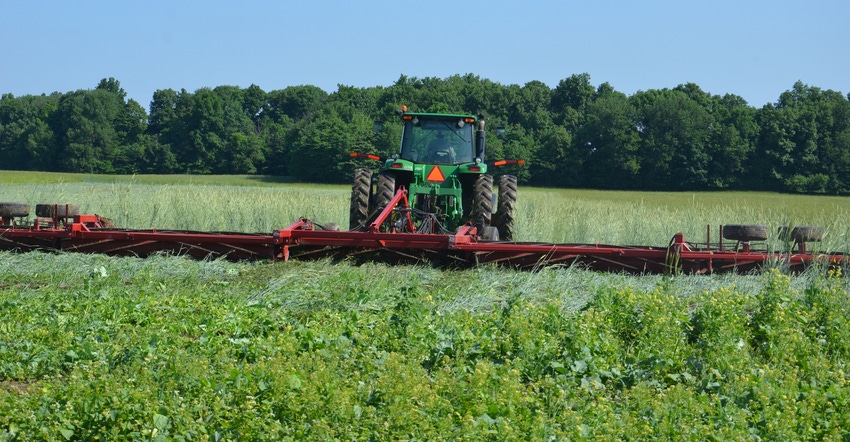July 21, 2018

By Don Donovan
Memorial Day weekend this year meant moving my daughter from Lafayette, Ind., to Columbus, Ohio. It also involved traveling through southwestern Indiana, visiting final resting places of family members. All this provided an opportunity to windshield-scout crops.
Much of these areas had one thing in common: It was dry. The rain that would come the following week was welcome. Here are observations I made that might have implications for next year.
• Soybean emergence issues. Late-planted beans had trouble coming up due to dry soil conditions, especially if the soil had been tilled prior to planting. Do you know that each tillage pass can cause the loss of a one-half to three-quarters of an inch of moisture? With the dry, hot, windy conditions, moisture loss was probably on the high side of that range this spring.
That means if you worked your soil twice before planting, you could have lost nearly 2 inches of moisture. It was apparent that beans planted after the dry conditions set in had issues with even plant stands. In many of these fields, there were good stands in the wetter areas, while in other areas, the stand was spotty. Reports showed that farmers trying to finish up bean planting couldn’t get their planters deep enough to put seed into moisture. What would have happened if rain hadn’t come the next week?
• Planter vs. drill. Late-planted no-till beans that were planted with a planter rather than a drill generally had far better stands. This probably isn’t earth-shattering news, but a no-till planter can maintain consistent seed depth and place seed deeper than a drill. With the price of soybean seed going up like seed corn, investment in a planter over a drill might be worth it. While beans can lay in the soil, come up later and compensate for weak stands, quick canopy is usually a goal for effective weed control. Maybe using a planter for effective seed placement in dry soils is vital.
• Cereal rye and crimping. My final observation has to do with cereal rye as a cover crop, especially after corn going to soybeans in 2018. For the most part, the 2017 corn crop was excellent, which meant there was limited available nitrogen in the soil to get rye started in the fall. A late winter meant rye broke dormancy late. A cool, early spring meant limited growth. In parts of Indiana, it got dry. The result was a stunted rye crop that headed out late, removing moisture from the soil. In many cases, mature, headed-out rye was less than 4 feet tall, and it was late May before it matured.
Farmers wanting to crimp rye to terminate it were left waiting until the rye reached maturity — meanwhile, it was removing needed moisture. Or they went ahead and planted, hoping the beans wouldn’t be too big when the rye was ready to crimp. The good news: Investigation of rooting depths revealed roots down more than 40 inches, even though top growth was less than normal.
Need backup plans
What does all this mean? For the most part, it means that in a soil health system, you must remain as flexible as possible. Not only must you have a Plan B, but also a Plan C, D and even E. Successful farmers across Indiana who are implementing soil health systems understand they must be ready to react from year to year as conditions that are out of their control change.
Donovan is a district conservationist with the Natural Resources Conservation Service, based in Parke County, Ind. He writes on behalf of the Indiana Conservation Partnership.
You May Also Like




